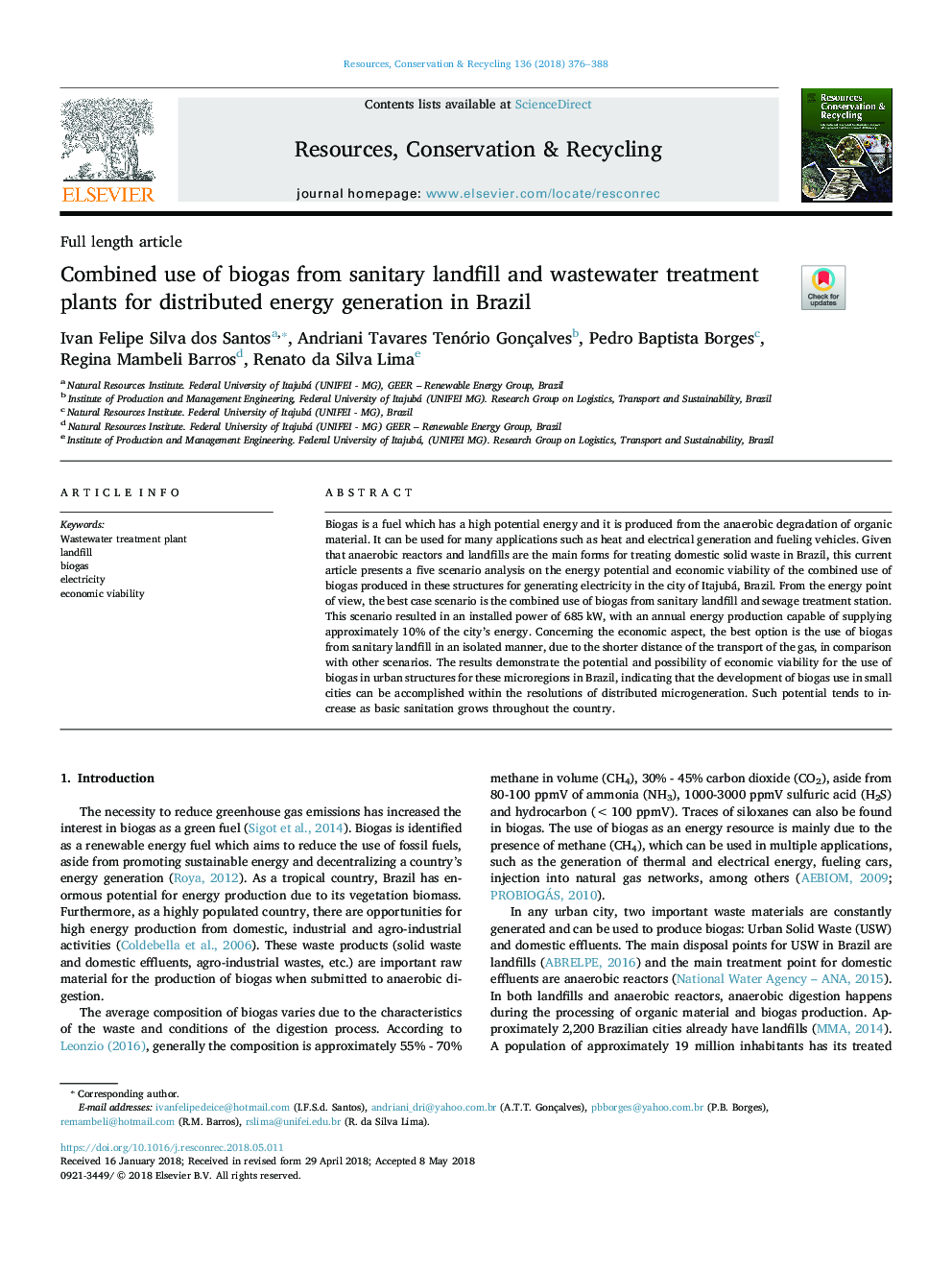| Article ID | Journal | Published Year | Pages | File Type |
|---|---|---|---|---|
| 7494106 | Resources, Conservation and Recycling | 2018 | 13 Pages |
Abstract
Biogas is a fuel which has a high potential energy and it is produced from the anaerobic degradation of organic material. It can be used for many applications such as heat and electrical generation and fueling vehicles. Given that anaerobic reactors and landfills are the main forms for treating domestic solid waste in Brazil, this current article presents a five scenario analysis on the energy potential and economic viability of the combined use of biogas produced in these structures for generating electricity in the city of Itajubá, Brazil. From the energy point of view, the best case scenario is the combined use of biogas from sanitary landfill and sewage treatment station. This scenario resulted in an installed power of 685â¯kW, with an annual energy production capable of supplying approximately 10% of the city's energy. Concerning the economic aspect, the best option is the use of biogas from sanitary landfill in an isolated manner, due to the shorter distance of the transport of the gas, in comparison with other scenarios. The results demonstrate the potential and possibility of economic viability for the use of biogas in urban structures for these microregions in Brazil, indicating that the development of biogas use in small cities can be accomplished within the resolutions of distributed microgeneration. Such potential tends to increase as basic sanitation grows throughout the country.
Related Topics
Physical Sciences and Engineering
Energy
Renewable Energy, Sustainability and the Environment
Authors
Ivan Felipe Silva dos Santos, Andriani Tavares Tenório Gonçalves, Pedro Baptista Borges, Regina Mambeli Barros, Renato da Silva Lima,
